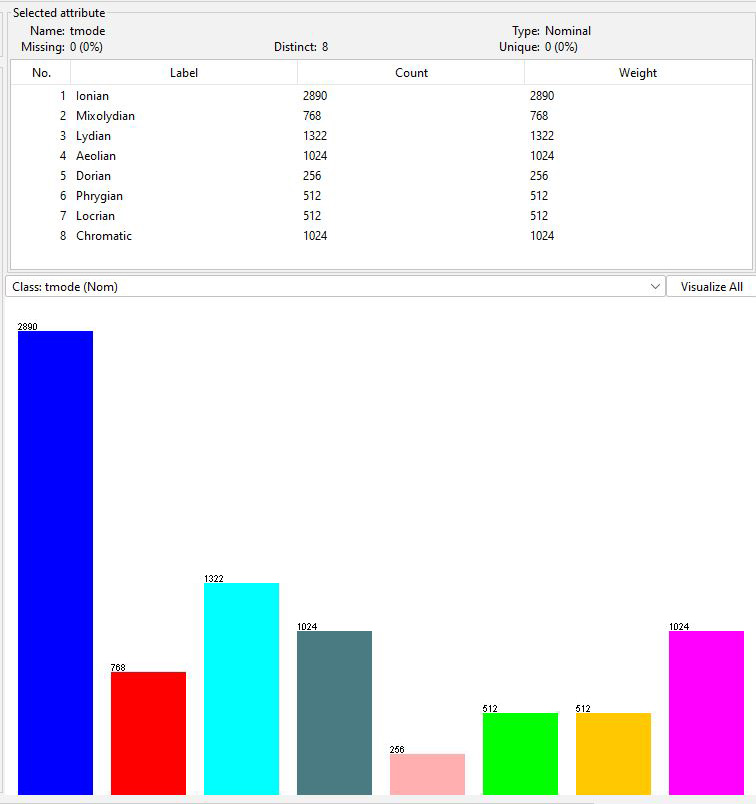CSC 458 - Predictive
Analytics I, Fall 2022, Assignment 4 on nominal classification
and ensemble models.
Assignment 4 due by 11:59 PM on Friday November 25 via D2L
Assignment 4.
1. To get the assignment:
Download compressed ARFF data files CSC458assn4_train_fulllag.arff.gz
and CSC458assn4_test_fullag.arff.gz
and Q&A file README.assn4.txt from these links.
You must answer questions in README.assn4.txt and turn it in to
D2L by the deadline.
Each answer for Q1 through Q11 in README.assn4.txt is worth 8
points, totaling 100%. There is a 10% late penalty for each day
the assignment is late.
2. Weka and README.assn4.txt operations:
Start Weka, bring up the Explorer GUI, and open CSC458assn4_train_fulllag.arff.gz.
Make sure to open the TRAIN data for training.
Set Files of Type at the bottom of the Open
window to (*.arff.gz) to see the input ARFF file. Double click it.
Next, go to the Classify tab and set Supplied
test set to CSC458assn4_test_fulllag.arff.gz. Make sure to use the TEST data
for testing.
These are the attributes we will use in this analyze in
CSC458assn4_train_fulllag.arff.gz and CSC458assn4_test_fullag.arff.gz.
We discussed time-series data analysis and this dataset on
November 1.
@attribute movement numeric
# A movement of a musical piece, conceptually a song, numbered 0
through 3.
@attribute channel numeric
# A MIDI channel, conceptually a musician
playing an instrument, numbered 0 through 3.
@attribute notenum numeric
# The note 0 through 127 being played. Think
of a piano keyboard.
@attribute tick numeric
# The
time with the (movement, channel) sequence, needed for note
lagging
@attribute ttonic numeric
# The so-called "do
note" or tonic or root, which is the key pitch of the scale.
# Initially ttonic
is tagged data by the score generator.
# Handout code
derives an empircal ttonic by taking the statistical mode of the
notes
# played in a given
(movement, channel).
@attribute tmode
{Ionian,Mixolydian,Lydian,Aeolian,Dorian,Phrygian,Locrian,Chromatic}
# scale being played

Figure 1: Distribution of tmode in the training dataset
We will classify tmode from other attributes. The test dataset
has an identical but independent distribution to the training
data. My
genmidi.py Jython script generated training and testing
data using different pseudo-random number seeds with
distributions seen in that link. You do not need to understand
the music theory in genmidi.py to do the assignment.

Figure 2: Distribution of normalized notes in the original
data colored by correlation to tmode
In Figure 2 a normalized note is the notes distance from the
tagged ttonic, which is the generator's intended "do" note in
the tmode. My preparation script extracts an actual "do" note as
the statistical mode (most frequently occurring value) of the
normalized notes. Here is some diagnostic output from that
script.
Computed and tagged tonic by (movement,channel):
('test', 0, 0) -> [7, 7]
('test', 0, 1) -> [7, 7]
('test', 0, 2) -> [7, 7]
('test', 0, 3) -> [7, 7]
('test', 1, 0) -> [9, 9]
('test', 1, 1) -> [9, 9]
('test', 1, 2) -> [9, 9]
('test', 1, 3) -> [9, 9]
('test', 2, 0) -> [7, 7]
('test', 2, 1) -> [7, 7]
('test', 2, 2) -> [7, 7]
('test', 2, 3) -> [10, 7]
('test', 3, 0) -> [7, 7]
('test', 3, 1) -> [7, 7]
('test', 3, 2) -> [7, 7]
('test', 3, 3) -> [7, 7]
('train', 0, 0) -> [7, 7]
('train', 0, 1) -> [7, 7]
('train', 0, 2) -> [7, 7]
('train', 0, 3) -> [7, 7]
('train', 1, 0) -> [9, 9]
('train', 1, 1) -> [9, 9]
('train', 1, 2) -> [9, 9]
('train', 1, 3) -> [9, 9]
('train', 2, 0) -> [7, 7]
('train', 2, 1) -> [7, 7]
('train', 2, 2) -> [7, 7]
('train', 2, 3) -> [1, 7]
('train', 3, 0) -> [7, 7]
('train', 3, 1) -> [7, 7]
('train', 3, 2) -> [7, 7]
('train', 3, 3) -> [7, 7]
All extracted tonics are the same as the tagged tonics except
for these two:
('test',
2, 3) -> [10, 7]
('train',
2, 3) -> [1, 7]
This mismatch occurs because channel 3 uses a chromatic
scale (mode) with uniform note distribution in movement
2, scattering notes with no pronounced tonic center.
Channel 2 also uses a chromatic scale with
uniform note distribution in movement 2.
Channels 0 and 1 use more constrained modes
but with uniform distribution in movement 2.
Movements 0, 1, and 3 use Gaussian
generation of notes in the tmode, generating
more predictive notes for each target mode.
Handout
file
CSC458assn4_train_fulllag.arff.gz
and CSC458assn4_test_fullag.arff.gz
also contain these derived
attributes. These are counters added from the current time's
notenum and the temporally preceding 11 instances within a given
(movement, channel) in temporal order sorted by tick values.
@attribute lagNote_0 numeric
@attribute lagNote_1 numeric
@attribute lagNote_2 numeric
@attribute lagNote_3 numeric
@attribute lagNote_4 numeric
@attribute lagNote_5 numeric
@attribute lagNote_6 numeric
@attribute lagNote_7 numeric
@attribute lagNote_8 numeric
@attribute lagNote_9 numeric
@attribute lagNote_10 numeric
@attribute lagNote_11 numeric
These are histogram sums of intervals in one scale with the
ttonic at lagNote_0 being the extracted ttonic and the others
being steps on the piano above that, up to but not including the
next octave.

